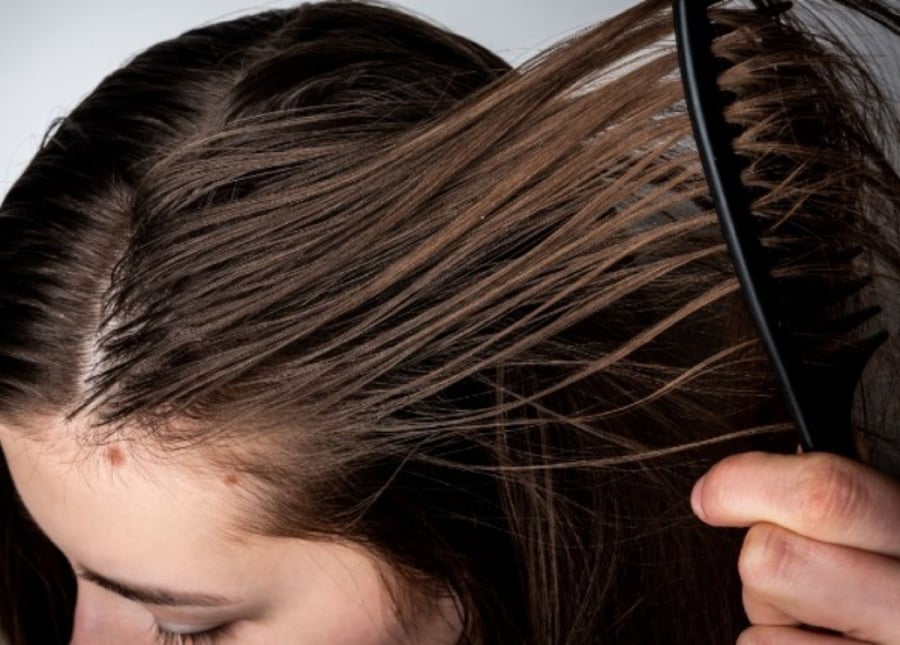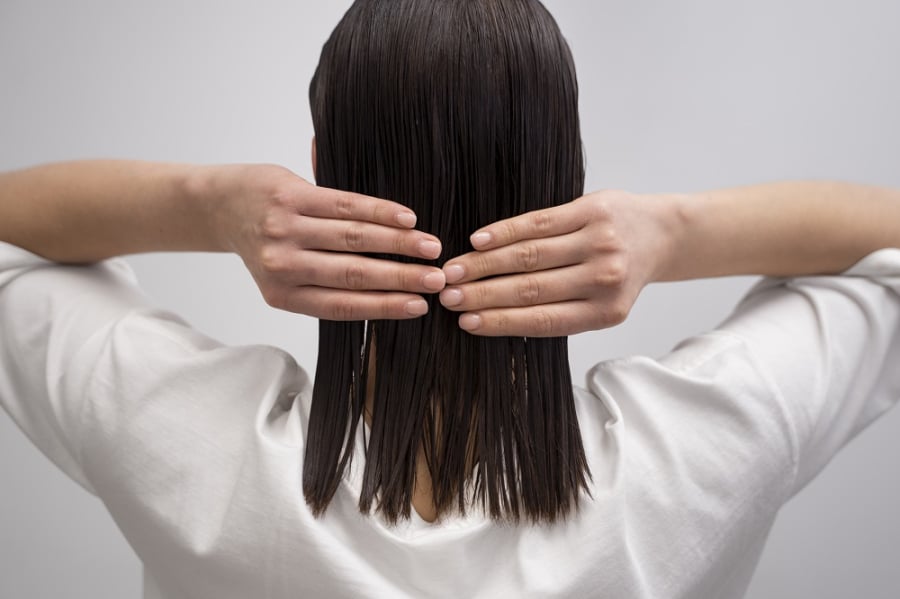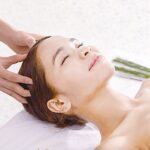Scalp Massage
A scalp massage with essential oils before each wash can help moisturize the skin, thereby controlling oily residue. Massaging also helps remove dead skin cells and built-up sebum, keeping the scalp clean and preventing clogged pores.

A pre-shampoo scalp massage with essential oils helps moisturize the scalp, reducing oiliness.
Proper Hair Washing Technique
Washing your hair too frequently can strip away its natural oils, causing your scalp to produce even more oil to compensate. Apply a small amount of shampoo to your scalp and hair roots, then gently massage and rinse without vigorously scratching your scalp or hair with your nails.
Air-dry Your Hair
While blow-drying can speed up the drying process, it’s not ideal for oily scalps. If you must use a blow dryer, set it to the lowest heat setting and direct the airflow downward to minimize damage to your hair.
Avoid Touching and Brushing Your Hair
Resist the urge to touch or brush your hair frequently. Doing so transfers sweat, bacteria, and dirt from your hands to your hair and scalp, making it oilier. Brushing your hair repeatedly also spreads sebum throughout your locks. It’s best to minimize these habits and brush your hair twice a day. Additionally, regularly cleaning your hairbrush can help reduce oil transfer.
Go Easy on the Conditioner
Apply a moderate amount of conditioner, focusing on the ends and length of your hair. Then, thoroughly rinse it out with water.
Minimize Hair Styling Products
If your scalp tends to get oily, avoid using hair styling products and hair setting sprays as they can make your hair even oilier.

Avoid hair styling products if you have an oily scalp, as they can make your hair greasier.
Dry Shampoo
Dry shampoo absorbs excess oil, giving your hair a cleaner and less greasy appearance. It doesn’t actually clean your hair but helps extend the time between regular washes.
Baby Powder or Baking Soda
In a pinch, baby powder or baking soda can help absorb excess oil from your hair, leaving it looking smoother and less oily.
Green Tea Rinse
Not only does green tea help with oily hair, but it also nourishes your hair from root to tip. Simply brew half a cup of green tea in a cup of water, let it cool, and apply it to your scalp. Leave it on for 30–45 minutes, then rinse. Do this once a week for best results.
Aloe Vera
To truly tackle oily hair, blend the gel from one aloe vera leaf with a few drops of lemon juice and a small amount of shampoo. Apply this mixture to your hair, leave it on for about five minutes, and then rinse thoroughly.



































